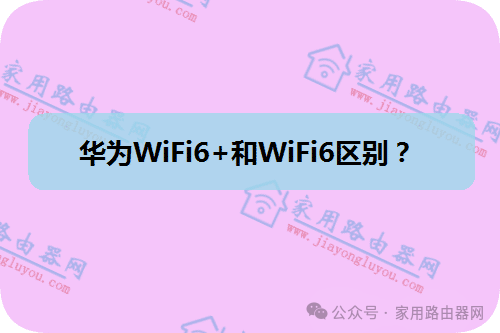Question: What are the differences between the WiFi 6+ technology mentioned in the promotional materials for Huawei WiFi 6 routers AX3 and AX3 Pro and regular WiFi 6?
Answer: Based on the current client hardware situation, there is no noticeable difference in user experience. Huawei WiFi 6+ or Intel WiFi 6 Gig+ essentially both belong to the WiFi 6 protocol (802.11AX), and in terms of existing technology, both protocols support wireless transmission rates of AX3000Mbps, while the mainstream WiFi 6 protocol currently remains at 1800Mbps.
The most intuitive difference between AX3000 and AX1800 is the bandwidth support; the former can support up to 160MHz, while the latter supports a maximum of 80MHz. This is also a major selling point for Huawei in promoting its WiFi 6 routers, and it indeed represents a technical improvement, as most current smartphones still cannot support the 160MHz protocol of WiFi 6.

What are the differences between Huawei WiFi 6+ and WiFi 6?
The following content is sourced from the internet and can serve as a reference for the improvements of WiFi 6 over WiFi 5, which are standards present in all WiFi 6 protocols. Finally, we will point out the important differences between Huawei WiFi 6+ and WiFi 6:
- ① Wi-Fi 6 will bring new changes: It optimizes device power consumption and coverage capabilities, supports high-speed concurrent connections for multiple users, and can demonstrate better performance in densely populated scenarios, while also providing longer transmission distances and higher transmission rates. Overall, compared to its predecessor, the advantage of Wi-Fi 6 is its “double high, double low”: high speed: thanks to the introduction of technologies such as uplink MU-MIMO, 1024QAM modulation, and 8*8 MIMO, the maximum rate of Wi-Fi 6 can reach 9.6Gbps, a speed that is said to be as fast as the wind.
- ② Low latency: Utilizing technologies such as OFDMA and Spatial Reuse, Wi-Fi 6 allows multiple users to transmit simultaneously within each time slot without having to queue, reducing competition and improving efficiency, thus lowering latency from 30ms in Wi-Fi 5 to 20ms, a 33% reduction in average latency.
- ③ Low power consumption: Another new technology in Wi-Fi 6, TWT (Target Wake Time), allows the AP to negotiate communication with terminals, reducing the time required to maintain transmission and search for signals, which means reduced battery consumption and improved battery life, with terminal power consumption decreasing by 30%.
- ④ Faster speeds, stronger performance, and different technologies: Wi-Fi 6’s maximum speed can reach 9.6Gbps, designed for the 5G era, and optimizes signal uplink coverage, perfectly aligning with NB-IoT IoT. Wi-Fi 5 uses OFDM technology, while Wi-Fi 6 borrows OFDMA technology from cellular networks, allowing many devices to transmit simultaneously without queuing or competing for bandwidth, enhancing efficiency and reducing latency.
One of the most important differences of Huawei WiFi 6 is:
Huawei’s exclusive intelligent application acceleration technology can further reduce latency to 10ms, while standard WiFi 6 has a latency of 20ms. The reason for this reduction in latency is primarily due to Wi-Fi 6+ being based on self-developed end-to-end chips. As a leader in 5G, Huawei is also a leader in Wi-Fi 6, having submitted 240 technical proposals and being the second-largest contributor to the Wi-Fi 6 standard. The Lingxiao chip is applied in smart routers. Huawei has achieved chip-level collaboration, allowing the power spectral density of Wi-Fi 6 smartphones to increase by up to 6dB, addressing the issue of false signals from smartphones at long distances, significantly improving signal quality and enabling the ability to penetrate through one more wall.
Therefore, the key enhancement of WiFi 6+ may still require support from Huawei’s series of smartphones.
In conclusion:
Whether it is the WiFi 6 or WiFi 6+ protocol standard, they originated in 2019, and the chip and router products were mostly launched in 2020, which is still in the initial stage, and the overall user experience still needs improvement.